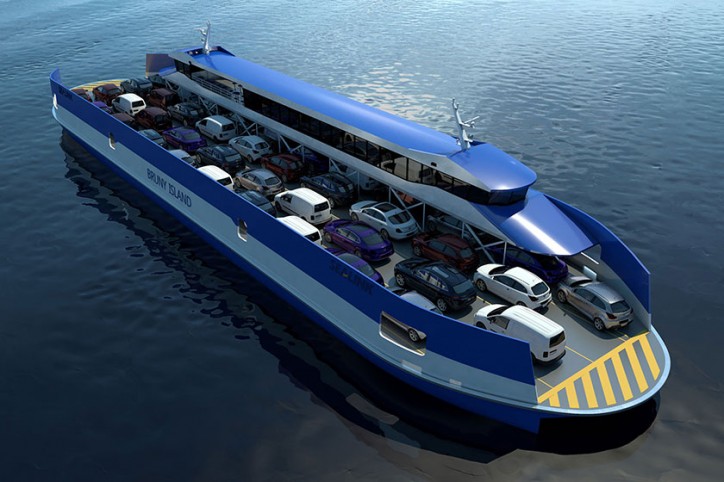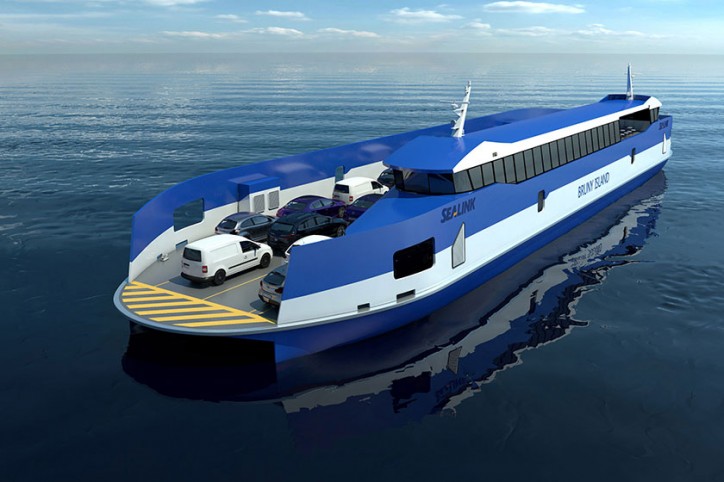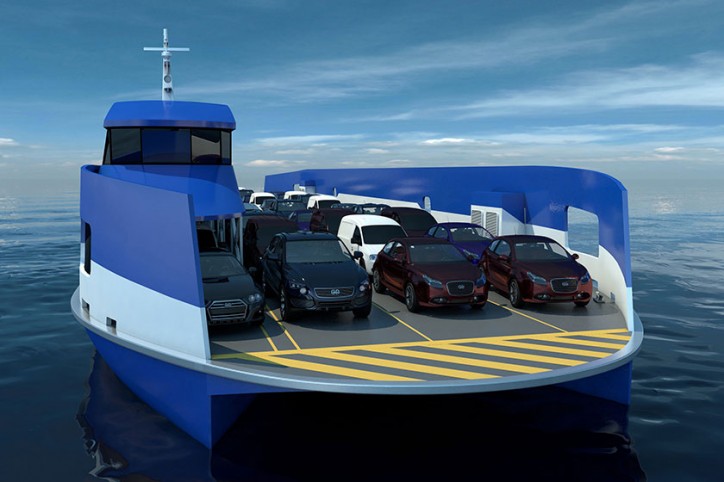Incat Crowther announced earlier today the design of a double-ended Ro-Pax Ferry to operate to Bruny Island in Tasmania.

The vessel will be operated by Sealink Travel Group – one of Australia’s largest vessel operators – and will be built by Richardson Devine Marine in Hobart. The first vessel will go into service in December 2019.
The vessel is unusual for a double-ended vehicle ferry in that it is a robust aluminium catamaran offering a very significant fuel saving when compared with a conventional steel monohull vessel. In addition, the vessel is designed for the later fitment of an extra vehicle deck should the vehicle patronage increase, removing the need to carry surplus displacement until market demand warrants it.
The vessel is configured to carry 36 cars and 150 passengers. Three of the vehicle lanes will be unrestricted in height, with the central two lanes carrying a total 90 lane meters of trucks.

The elevated cabin – located to one side of the vessel – is divided between open-sided covered space and indoor space. The indoor space seats 36 passengers in booth seats with tables, whist the outdoor space features café style seating for 30 passengers.
The development of the vessel mirrors Incat Crowther’s wholistic approach to an operation, targeting long-term value and minimizing risk to the operator. This incudes the integration of established shore-based infrastructure, which imposes heavily on the vessel.

The vessel will be powered by four Scania DI13 070M main engines, each producing 184kW. Positioned in each of the four corners of the vessel, these engines will be directly coupled to Schottel SRP 100 azimuthing drives. As well as offering exceptional maneuverability, the azimuthing drives provide propulsion efficiency with all four delivering thrust in the direction of vessel travel. If required, the vessel can operate on two pods during off-peak periods, reducing operating costs.
Source: Incat Crowther